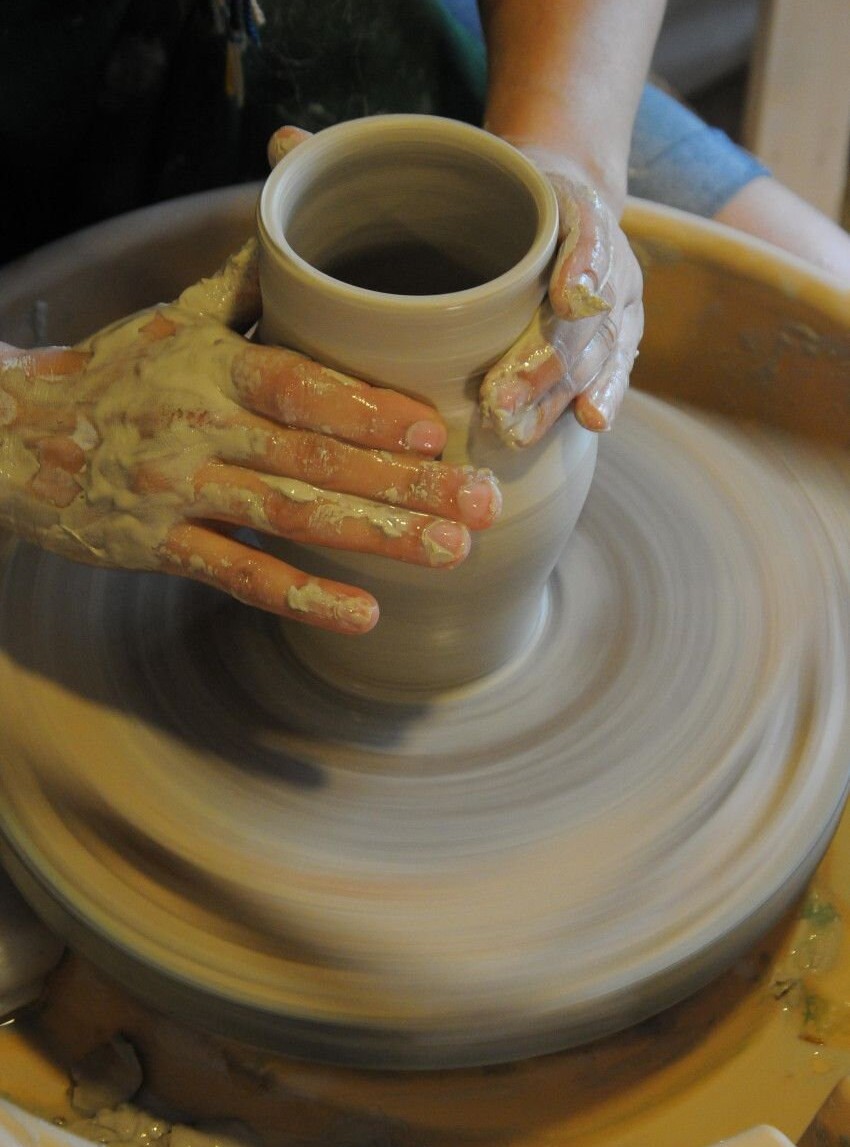Lignosulfonate: Your Clay’s New Best Pal
Imagine you’re kneading clay to make a mug, but it’s acting like a stubborn lump that won’t bend or stretch without cracking. Frustrating, right? That’s where lignosulfonate swoops in like a superhero. It’s this natural, brownish stuff that comes from the leftovers of making paper from wood. Think of it as the sawdust of the paper world, but instead of tossing it, they turn it into something awesome for ceramics. It’s usually sold as a powder or liquid (like sodium or calcium lignosulfonate), and when you mix a tiny bit into your clay, it’s like giving it a big ol’ hug—suddenly, the clay’s softer, stretchier, and way easier to shape.
As a plasticizer, lignosulfonate’s main job is to make clay more flexible, so you can mold it without a fight. But it’s also got side gigs, like helping clay hold together before it’s fired and making liquid clay (called slip) flow better for pouring into molds.
How Lignosulfonate Makes Clay Play Nice
When you’re shaping clay—whether you’re spinning it on a pottery wheel, pressing it into a tile mold, or hand-building a sculpture—it needs to be soft and bendy, like well-kneaded dough. Lignosulfonate works its magic by coating the tiny clay particles, so they slide past each other instead of sticking together like a cranky pile of wet sand. Here’s what it does:
- Makes Clay Stretchy: Ever tried pulling clay into a thin wall for a vase, only to have it tear? Lignosulfonate makes the clay more pliable, so it stretches without breaking. It’s like turning stiff bread dough into something you can roll out thin.
- Softens Tough Clay: Some clays are naturally grumpy—they’re hard to shape and crack if you look at them wrong. Lignosulfonate softens them up, so you can mold or carve without cursing under your breath.
- Keeps Moisture Just Right: Clay needs water to be workable, but too much makes it a sloppy mess, and too little makes it dry out fast. Lignosulfonate helps the clay hold onto water evenly, so it stays soft and moldable for longer.
- Helps Out Before Firing (Bonus!): While it’s making your clay easier to shape, lignosulfonate also gives unfired pieces (called greenware) a bit of extra strength. This means your mug or tile is less likely to fall apart when you move it to the kiln.
You don’t need much—just a pinch, like 0.1–2% of the clay’s weight. For example, if you’ve got a 10-pound bucket of clay, a teaspoon or two of lignosulfonate can make it feel like a whole new material, perfect for shaping a pot or pressing a tile.
Where Lignosulfonate Saves the Day
Lignosulfonate is a lifesaver in all kinds of ceramic projects, from a potter’s wheel in a backyard studio to giant factories pumping out tiles. Here’s how it’s used to make clay more workable:
- Pottery on the Wheel: Let’s say you’re throwing a coffee mug, but the clay’s fighting you—too stiff to pull up into a nice shape. Mix in a smidge of lignosulfonate (like 0.3%), and suddenly the clay feels smooth and stretchy. You can pull it taller, make thinner walls, or add fancy curves without it cracking or collapsing. It’s like the clay’s finally cooperating with your vision.
- Tile Making: Factories making floor or wall tiles deal with tons of clay that needs to be pressed into molds. If the clay’s too stiff, the tiles come out uneven or break before they’re fired. Adding 0.5–1% lignosulfonate makes the clay soft enough to fill the mold perfectly, so every tile comes out smooth and ready for the kiln. A tile factory might use it to cut down on broken tiles, saving them a bunch of cash.
- Hand-Building Big Stuff: If you’re sculpting something big, like a garden statue or a decorative bowl, lignosulfonate keeps the clay flexible, so you can add details or join pieces without them splitting. It’s like having clay that stays patient while you fiddle with it.
- Extruding Clay: Some ceramics, like pipes or fancy trim, are made by pushing clay through a machine, kind of like squeezing toothpaste. Lignosulfonate makes the clay soft and flowy, so it doesn’t clog the machine or come out lumpy.
- A Little Help with Slip Casting: While its plasticizing magic is mostly for solid clay, lignosulfonate also helps when you’re pouring liquid clay into molds for things like sinks or figurines. It makes the slip flow better, but if you need to trim or tweak the piece after it’s cast, the clay’s still workable thanks to that plasticizing effect.
Why Everyone Loves Lignosulfonate
So why is lignosulfonate such a big deal for ceramic folks? Here’s why it’s a total win:
- It’s Cheap as Chips: You only need a tiny bit to transform your clay, so it doesn’t break the bank. Whether you’re a potter on a budget or a factory watching pennies, lignosulfonate is a steal.
- It’s Good for the Planet: It’s made from wood scraps left over from paper mills, so it’s basically recycled. In 2025, when everyone’s trying to be greener, using lignosulfonate feels like doing your part for the environment.
- Fewer Cracked Pots: By making clay softer and controlling moisture, lignosulfonate cuts down on cracks when you’re shaping or drying your pieces. That means less heartbreak when you open the kiln.
- Works for Everyone: Whether you’re making a single teapot or a million bathroom tiles, lignosulfonate’s got your back. It’s like the all-purpose tool in your pottery kit.
- Poof, It’s Gone in the Kiln: Lignosulfonate burns away completely when you fire your ceramics, so it doesn’t leave any gunk behind to mess up your shiny new mug or tile.
Watch Out for These Gotchas
Lignosulfonate’s awesome, but it’s not perfect. Here are some things to keep in mind so you don’t end up with a clay disaster:
- Don’t Go Overboard: If you add too much, your clay might turn into a soupy mess, like overwatered soup. Start with a tiny amount—like 0.1–0.5%—and add more if your clay still feels stiff. For a 10-pound batch, that’s about a teaspoon.
- Pick the Right Kind: There’s sodium lignosulfonate, calcium lignosulfonate, and others. Sodium’s great for making clay flowy and stretchy, while calcium might be better for holding things together. Ask your supplier what’s best for your project.
- Test Your Clay First: Every clay’s a little different—some are naturally soft, others are like shaping a brick. Mix a small handful with lignosulfonate and try shaping a mini pot or tile to see how it feels.
- Dry Slow and Steady: Lignosulfonate helps clay dry evenly, but big pieces or tiles can still crack if you rush it. Wrap your work in a damp cloth or plastic bag for a day or two to slow things down.
- Check Your Kiln Temps: Lignosulfonate burns away in most kilns, but if you’re firing at really low temps (like for some decorative stuff), make sure it doesn’t leave any traces. Most pottery or tile kilns are hot enough, though.
How Lignosulfonate Stacks Up Against Other Options
You might be thinking, “Couldn’t I use something else to make my clay softer?” Sure, there are other ways to add plasticity, like extra ball clay, bentonite, or synthetic stuff like polyethylene glycol. Here’s how lignosulfonate compares:
- Vs. Ball Clay or Bentonite: These are clays you can add to make your mix more flexible, but they can make your pieces shrink more or stick together during firing. Lignosulfonate gives you that soft, workable feel without those headaches.
- Vs. Synthetic Plasticizers: Man-made additives like polyethylene glycol can work, but they cost more and aren’t as eco-friendly. Lignosulfonate’s natural and cheap, and it gets the job done just as well.
- Vs. Stuff Like Starch: Starch can make clay a bit softer, but it doesn’t do all the extra stuff lignosulfonate does, like strengthening greenware or helping slip flow. Lignosulfonate’s like the kid who’s good at everything.
What makes lignosulfonate special is that it’s not just a plasticizer—it’s also a binder and a flow-improver, so you get a lot of bang for your buck.
Real-World Stories and Trends
In 2025, lignosulfonate’s a bit of a rockstar in ceramics because it’s natural and sustainable. With everyone trying to cut down on waste, using a paper mill by-product like lignosulfonate is a no-brainer.
Big companies like GREEN AGROCHEM sell lignosulfonate, and they’re super helpful. They’ll tell you whether to use powder or liquid and how much to add for things like pottery or tiles. Some even give out free samples, so you can try it before buying a big bag.
How to Use Lignosulfonate Like a Pro
Ready to give lignosulfonate a whirl? Here’s how to make it work for your clay, whether you’re a weekend potter or running a tile factory:
- Add a Tiny Bit: Start with a small amount—like 0.1–0.5% of your clay’s weight. For a 10-pound batch, that’s about a teaspoon. Mix it in and see if your clay feels softer and easier to shape.
- Mix It with Water First: Stir the lignosulfonate into a bit of warm water until it dissolves, then add it to your clay or slip. This keeps it from clumping up and makes sure it spreads evenly.
- Test a Little Chunk: Grab a handful of clay, mix in some lignosulfonate, and shape a small tile or pot. See how it feels to work with and how it dries. This way, you won’t waste a big batch if it’s not quite right.
- Chat with Your Supplier: Companies like GREEN AGROCHEM know their stuff. They can tell you if sodium or calcium lignosulfonate is better for your clay and how much to use. They might even send you a guide or a sample.
- Take Drying Easy: Lignosulfonate helps clay stay moist, but big pieces or tiles still need slow drying. Cover them with a damp cloth or plastic for a couple of days to keep cracks at bay.
- Write It Down: Keep a notebook with how much lignosulfonate you used and how the clay acted. It’s like keeping a recipe card for your favorite cookies—you’ll want to get it just right next time.
Wrapping It Up
Lignosulfonate is like the secret ingredient that makes clay a joy to work with. It turns stiff, cranky clay into something soft, stretchy, and ready to shape into mugs, tiles, or sculptures. It’s cheap, comes from recycled wood, and disappears in the kiln, leaving you with perfect ceramics. Whether you’re a potter tinkering in your garage or a factory making thousands of tiles, lignosulfonate’s got your back.

